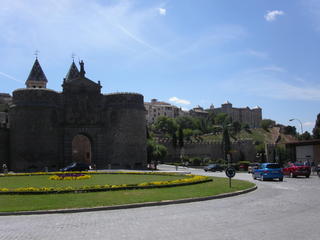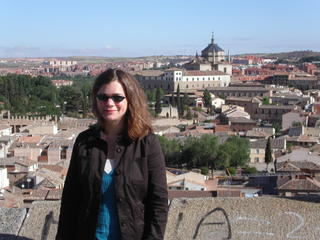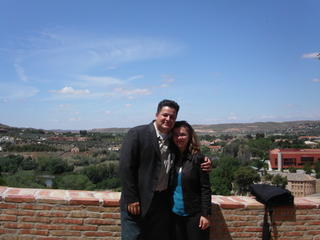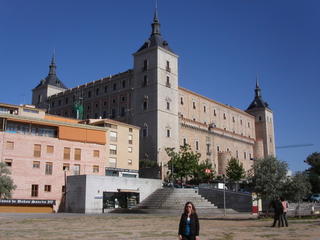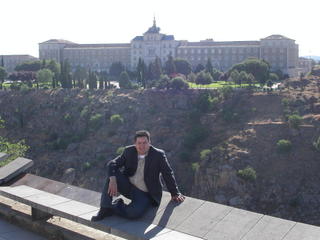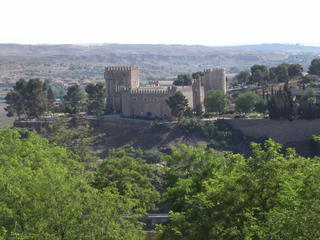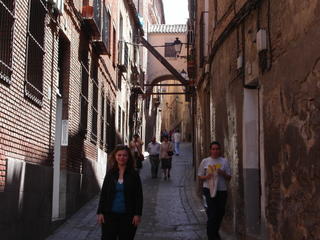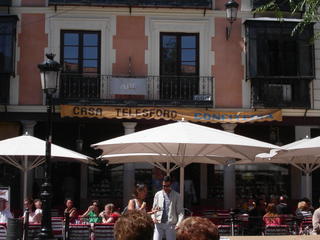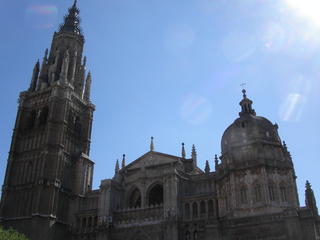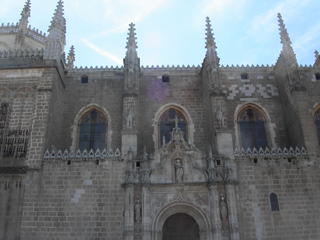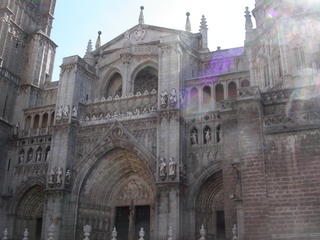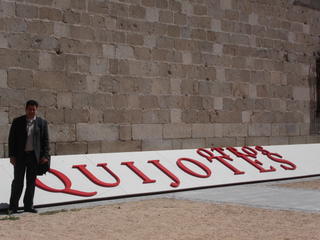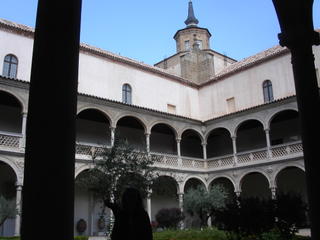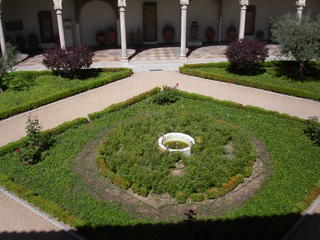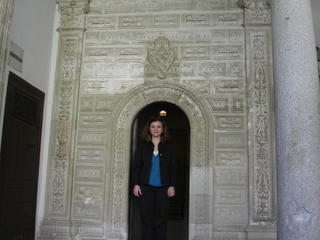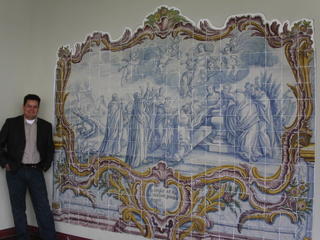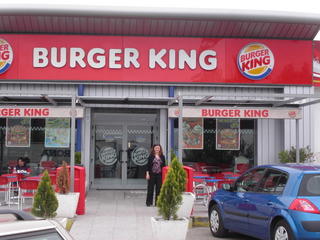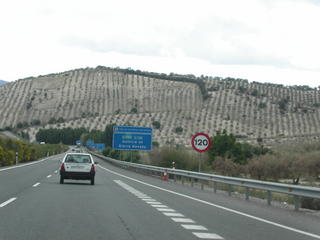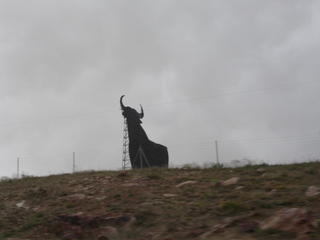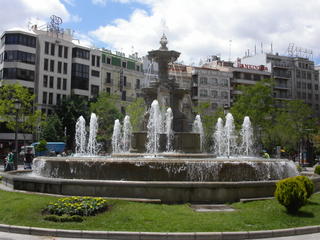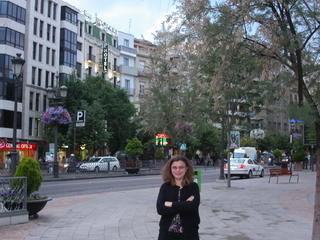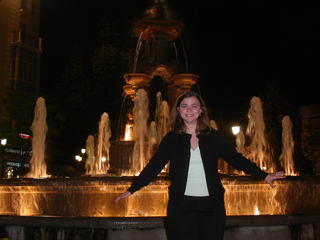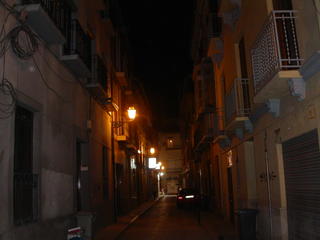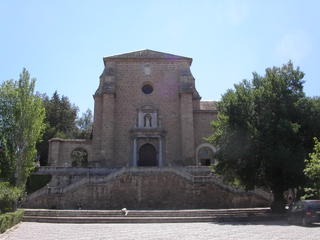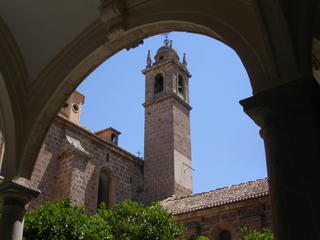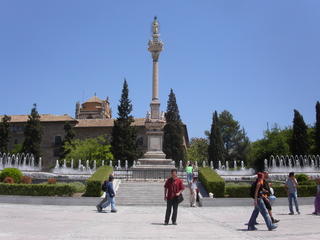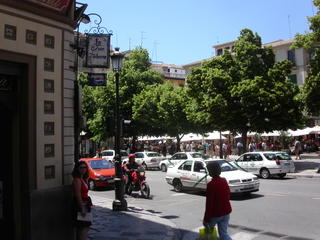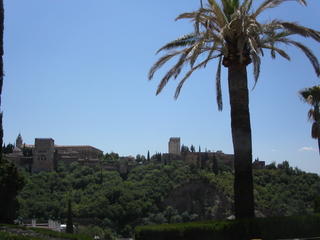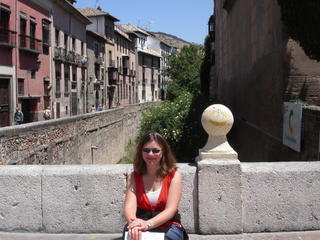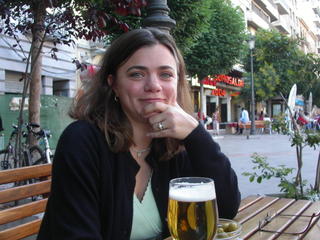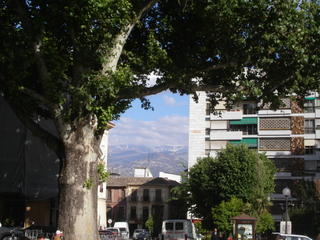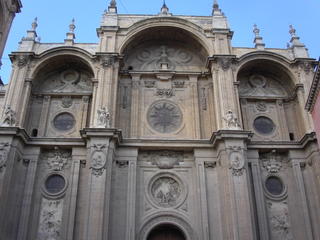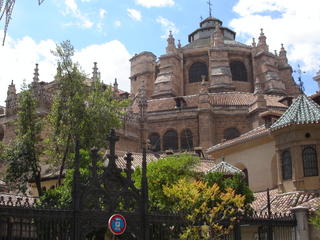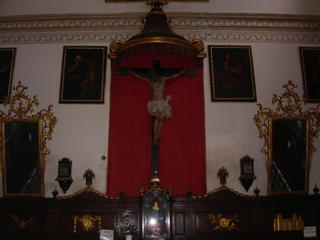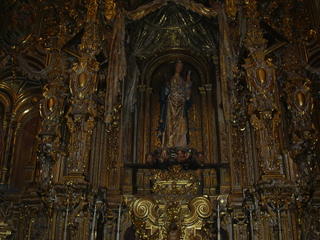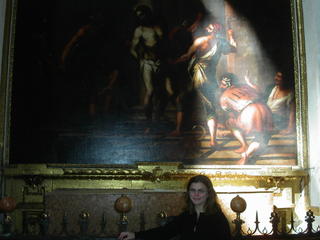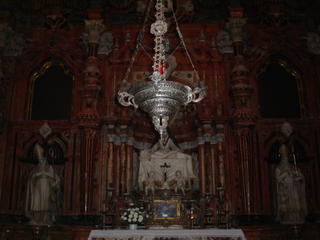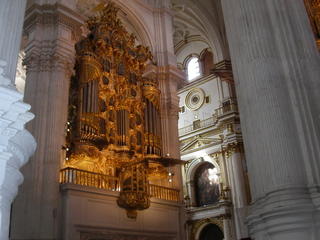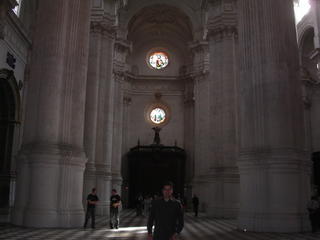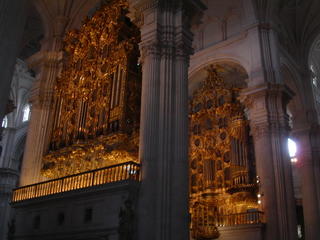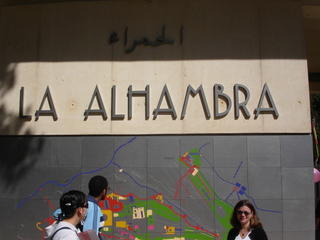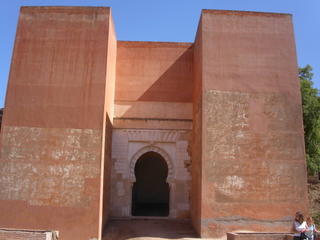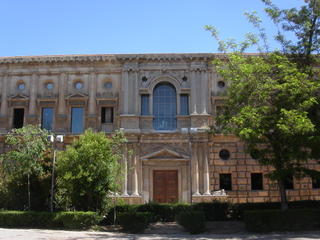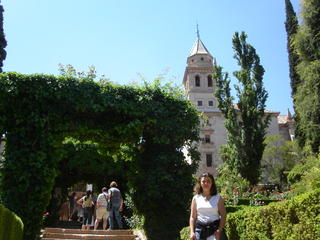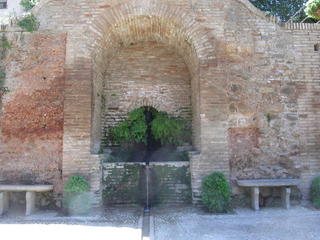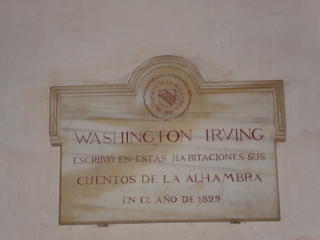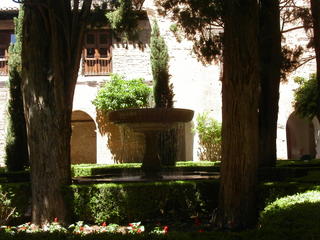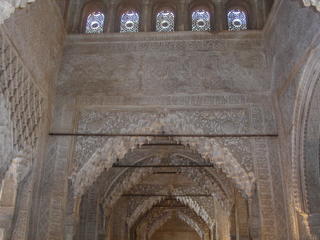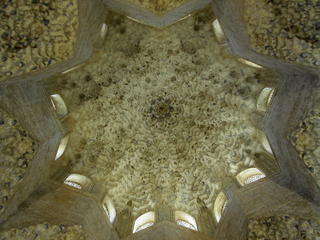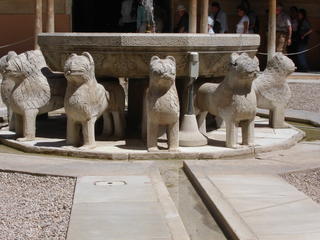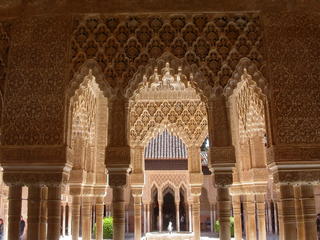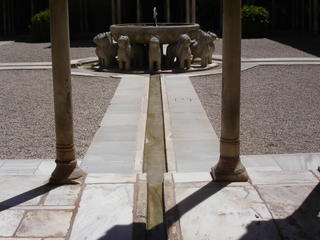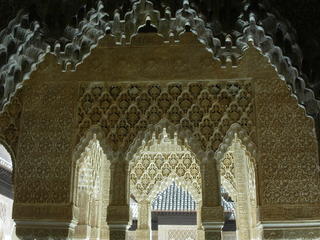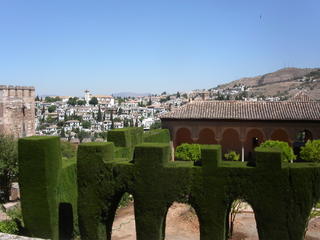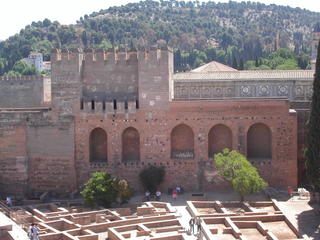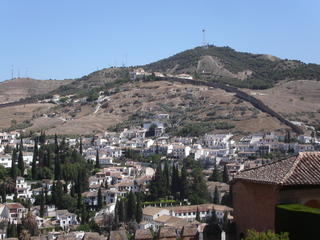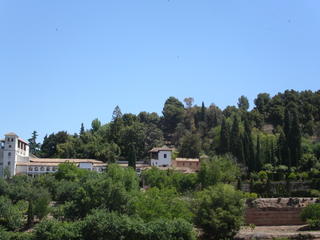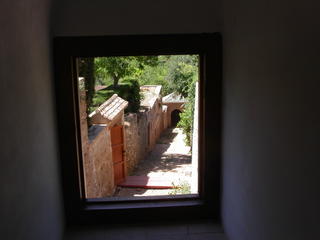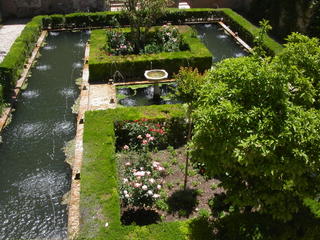Madrid
For our second anniversary, Sara and I traveled to Spain. During our two week vacation, we visited Madrid, Toledo, Granada, Sevilla and Barcelona.
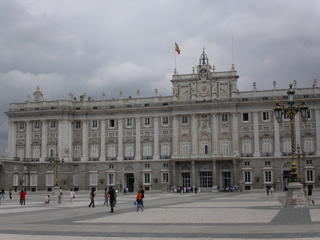 El Palacio Real (The Royal Palace) is a palace that is no longer used as a residence, but it has been kept intact since it last functioned as home to the king, primarily serving as a tourist attraction.
El Palacio Real (The Royal Palace) is a palace that is no longer used as a residence, but it has been kept intact since it last functioned as home to the king, primarily serving as a tourist attraction.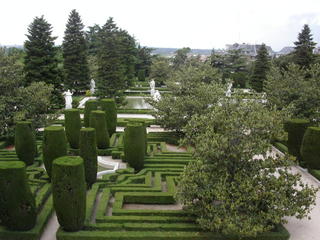 Jardines de Sabatini are located north to El Palacio Real. The gardens were named afte Sabatini whom built the palace's horse stables on this location.
Jardines de Sabatini are located north to El Palacio Real. The gardens were named afte Sabatini whom built the palace's horse stables on this location.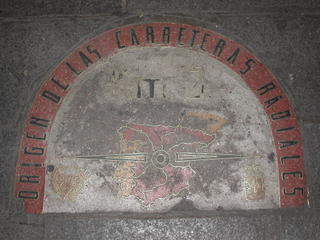 It is considered the centre of the city and the centre of Spain. From its Km. 0 (at Puerta del Sol) originate all the main roads of the country.
It is considered the centre of the city and the centre of Spain. From its Km. 0 (at Puerta del Sol) originate all the main roads of the country. 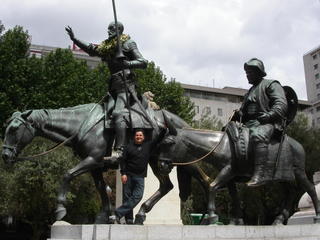 Plaza de España: The Plaza de España is one of Madrid's largest and most popular squares. The most popular sight at the Plaza de España is the monument to Miguel de Cervantes, writer of the world famous story of Don Quixote de la Mancha and his trusty squire, Sancho Panza. Visitors flock to the monument to get their picture taken in front of the bronze statues, and Oscar was not the exception.
Plaza de España: The Plaza de España is one of Madrid's largest and most popular squares. The most popular sight at the Plaza de España is the monument to Miguel de Cervantes, writer of the world famous story of Don Quixote de la Mancha and his trusty squire, Sancho Panza. Visitors flock to the monument to get their picture taken in front of the bronze statues, and Oscar was not the exception.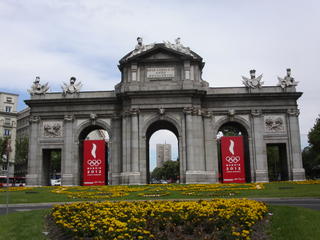 Puerta de Alcala is One of Madrid's enduring symbols, it's made entirely of granite, with one central arch and two smaller passageways on each side. Carlos III had his Court architect Sabatini build the gate in 1778 as a monument to himself and to show visiting merchants from Aragon how important the city had become.
Puerta de Alcala is One of Madrid's enduring symbols, it's made entirely of granite, with one central arch and two smaller passageways on each side. Carlos III had his Court architect Sabatini build the gate in 1778 as a monument to himself and to show visiting merchants from Aragon how important the city had become. Sara Jane at the entrance of Campo del Moro: The Campo del Moro (Field of the Moor) was so named because a Moorish army camped here in the 12th century. It later became a hunting park.
Sara Jane at the entrance of Campo del Moro: The Campo del Moro (Field of the Moor) was so named because a Moorish army camped here in the 12th century. It later became a hunting park.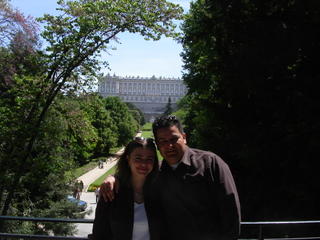 Sara and Oscar at the entrance of Campo del Moro (Palacio Real in the background): In the nineteenth century was made into a public park, with a typical mixture of formal elements with gardenesque planting and curvey paths.
Sara and Oscar at the entrance of Campo del Moro (Palacio Real in the background): In the nineteenth century was made into a public park, with a typical mixture of formal elements with gardenesque planting and curvey paths. La Plaza Mayor has been the site of crowning of kings, executions, tornaments, weddings, bullfights and inquisition trials. This very large square is surrounded continuesly by one very large square building from which onlookers perched to view the festivities in the square
La Plaza Mayor has been the site of crowning of kings, executions, tornaments, weddings, bullfights and inquisition trials. This very large square is surrounded continuesly by one very large square building from which onlookers perched to view the festivities in the square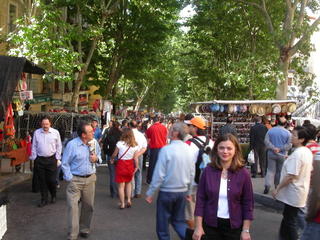 The Flea Market know as El Rastro can be found in Madrid on Sunday mornings. Starting at the Plaza de Cascorro the market runs down the section of road know as the 'Ribera de Curtidores'. Here vendors set up tables and booths to promote their wares.
The Flea Market know as El Rastro can be found in Madrid on Sunday mornings. Starting at the Plaza de Cascorro the market runs down the section of road know as the 'Ribera de Curtidores'. Here vendors set up tables and booths to promote their wares.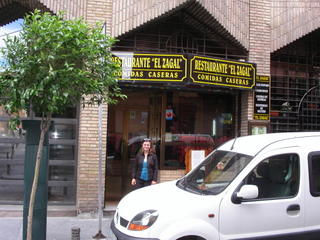 Resturante "El Zagal" was recommended by our hotel receptionist. The prices were moderate, and the food was of good quality. We went there twice, so we recommend the "paella" dish.
Resturante "El Zagal" was recommended by our hotel receptionist. The prices were moderate, and the food was of good quality. We went there twice, so we recommend the "paella" dish.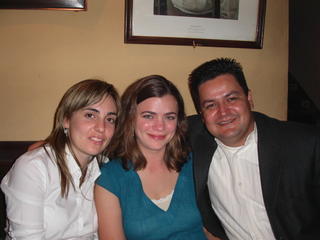 Unfortunately, I have forgotten the name of the bar where Angela and her fiance took us to have some good sangria. The bar was small, and the walls were decorated with poems written by famous customers and other not so famous.
Unfortunately, I have forgotten the name of the bar where Angela and her fiance took us to have some good sangria. The bar was small, and the walls were decorated with poems written by famous customers and other not so famous.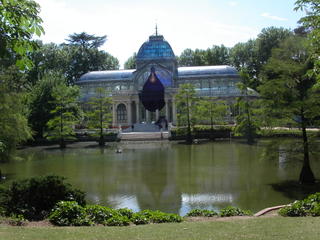 Palacio de Cristal (Crystal Palace) stands in the heart of the Retiro Park, reflecting charismatically in a small lake. The Palacio de Cristal is a glass pavilion inspired by The Crystal Palace in London and designed in 1887 by Ricardo Velázquez Bosco.
Palacio de Cristal (Crystal Palace) stands in the heart of the Retiro Park, reflecting charismatically in a small lake. The Palacio de Cristal is a glass pavilion inspired by The Crystal Palace in London and designed in 1887 by Ricardo Velázquez Bosco.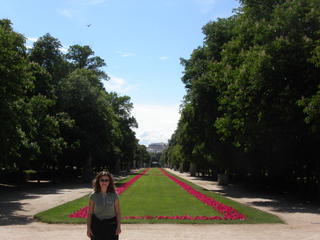 El Parque del Buen Retiro (Park of the Pleasant Retreat) is a large and popular, 140 hectare park in Madrid. So named because in the 16th century, the Royals used to go here for Christmas and Easter. Later Philip III decided to build Royal Gardens here.
El Parque del Buen Retiro (Park of the Pleasant Retreat) is a large and popular, 140 hectare park in Madrid. So named because in the 16th century, the Royals used to go here for Christmas and Easter. Later Philip III decided to build Royal Gardens here. 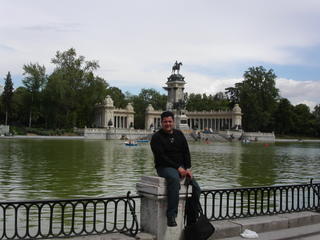 Parque del Buen Retiro: The Estanque located in the middle of the park is the original lake. Here people rent rowboats and spend the afternoon lazily drifting about the lake.
Parque del Buen Retiro: The Estanque located in the middle of the park is the original lake. Here people rent rowboats and spend the afternoon lazily drifting about the lake. Parque del Buen Retiro: Throughout the park, you can find a place to buy a soft drink and enjoy it while people watching. At this location, Sara Jane's backpack was stolen eleven years ago.
Parque del Buen Retiro: Throughout the park, you can find a place to buy a soft drink and enjoy it while people watching. At this location, Sara Jane's backpack was stolen eleven years ago.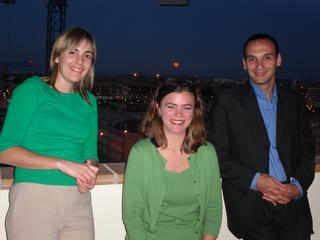 Angela and her fiance, Ramon, are showing the views of Madrid from their roof.
Angela and her fiance, Ramon, are showing the views of Madrid from their roof.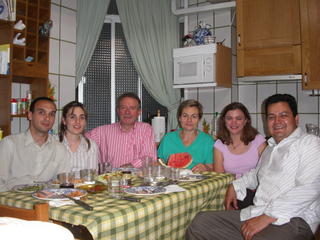 This was the SJ's host family in Madrid while participating in a school exchange program eleven years ago, in 1994. We stayed at their place our last two days in Madrid. This was a great experience because I had the opportunity to experience real life in Madrid.
This was the SJ's host family in Madrid while participating in a school exchange program eleven years ago, in 1994. We stayed at their place our last two days in Madrid. This was a great experience because I had the opportunity to experience real life in Madrid.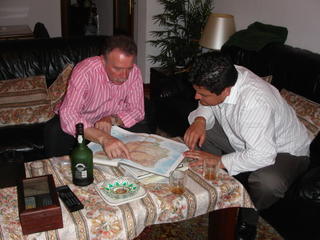 While having a glass of porto, I plan with Santiago our second trip to Spain that would take us to the northern region of the country.
While having a glass of porto, I plan with Santiago our second trip to Spain that would take us to the northern region of the country.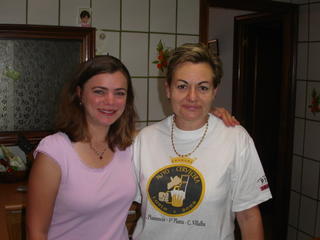
Sara and Maria Angeles. Maria Angeles cooked homemade paella Valenciana for us. She was very sweet, and we really enjoyed our meals with this energetic and fun family.
Museo Del Prado, Madrid
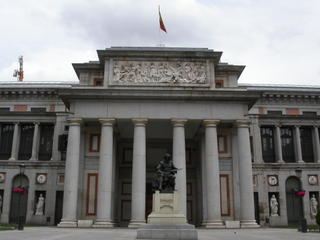 The Madrid Prado Museum is considered internationally to be one of the world’s most significant art institutions.
The Madrid Prado Museum is considered internationally to be one of the world’s most significant art institutions.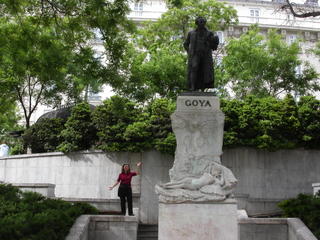 The majority of the work by both Goya and Velasquez is housed here, along with many and notable works by El Greco, Murillo and Zurbaran. The galleries are similarly home to a substantial collection of Flemish paintings including work by Rubens, Van Dyck and Rembrandt.
The majority of the work by both Goya and Velasquez is housed here, along with many and notable works by El Greco, Murillo and Zurbaran. The galleries are similarly home to a substantial collection of Flemish paintings including work by Rubens, Van Dyck and Rembrandt.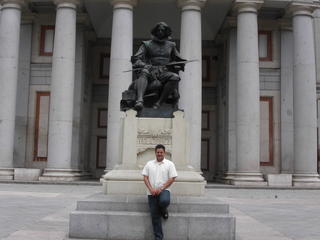 Wandering through the hallways of this extensive museum is a lovely way to spend the afternoon. The work on display here is both eye-catching and interesting.
Wandering through the hallways of this extensive museum is a lovely way to spend the afternoon. The work on display here is both eye-catching and interesting. Diego Velazquez' monumental "Las Meninas" ("Ladies in Waiting") is not only the best painting in the Western world but it is also one of the most puzzling.
Diego Velazquez' monumental "Las Meninas" ("Ladies in Waiting") is not only the best painting in the Western world but it is also one of the most puzzling.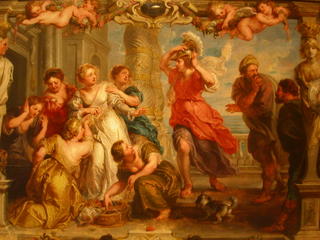
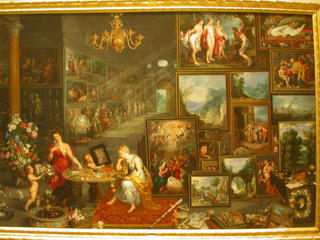
Plaza Mayor, Madrid
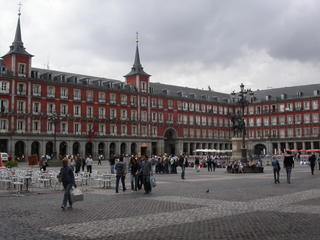 Plaza Mayor - Madrid is a vibrant and multi-cultured city, and it has activities and attractions to offer everyone. Many visitors to Madrid go to see such attractions as monuments, statues, and manor houses. One of the best places in Madrid to visit is the Plaza Mayor.
Plaza Mayor - Madrid is a vibrant and multi-cultured city, and it has activities and attractions to offer everyone. Many visitors to Madrid go to see such attractions as monuments, statues, and manor houses. One of the best places in Madrid to visit is the Plaza Mayor.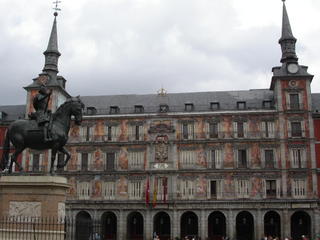 The Plaza Mayor is an extremely grand 17th-century arcaded square in the heart of Madrid. In the past, the square was the location of great festivals, ceremonies, plays, and even the crowning of Kings. Unfortunately, it has also seen some less than savoury events such as the public burnings of heretics. What can’t be disputed is that the Plaza Mayor has played a vital role in Spanish history.
The Plaza Mayor is an extremely grand 17th-century arcaded square in the heart of Madrid. In the past, the square was the location of great festivals, ceremonies, plays, and even the crowning of Kings. Unfortunately, it has also seen some less than savoury events such as the public burnings of heretics. What can’t be disputed is that the Plaza Mayor has played a vital role in Spanish history.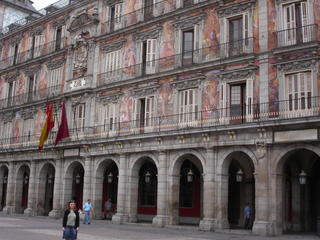 The days of the past are now long gone, but this beautiful square still remains. It is decorated with eye-catching, kaleidoscopic-coloured murals and is surrounded by baroque architecture, providing a stunning array of images for tourists to soak in. Standing at the Plaza Mayor feels like standing on the life-pulse of Madrid.
The days of the past are now long gone, but this beautiful square still remains. It is decorated with eye-catching, kaleidoscopic-coloured murals and is surrounded by baroque architecture, providing a stunning array of images for tourists to soak in. Standing at the Plaza Mayor feels like standing on the life-pulse of Madrid.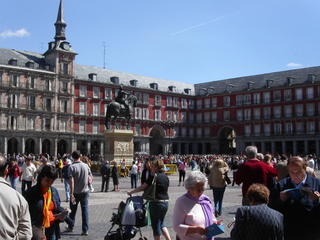 Tourists are free to visit the many plaza shops and cafes surrounding the square and enjoy the calm mornings, the busy afternoons, and the lively evenings. Many of the best tapas bars in the city can be found at the Plaza Mayor or its surroundings.
Tourists are free to visit the many plaza shops and cafes surrounding the square and enjoy the calm mornings, the busy afternoons, and the lively evenings. Many of the best tapas bars in the city can be found at the Plaza Mayor or its surroundings.